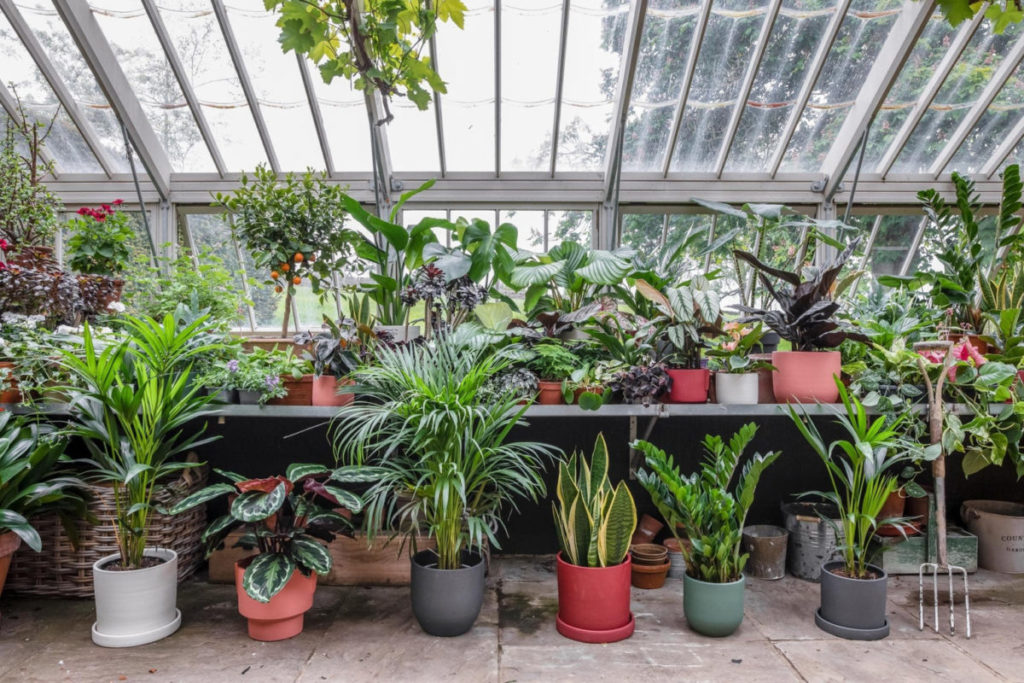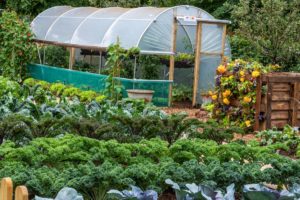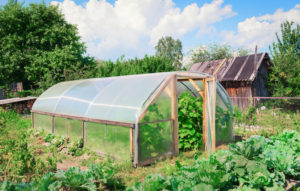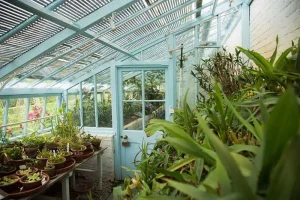Welcome to our comprehensive guide to selecting the ideal plants for your greenhouse!
As an experienced horticulturist, I understand that choosing the right plants is essential for a successful and productive greenhouse operation.
With so many options available, it can be overwhelming to determine which plants are best suited for your specific climate, soil conditions, and desired harvest times.
That’s why we’ve created this ultimate guide to help you make informed decisions about the right plants for your greenhouse.
Whether you’re a seasoned grower or just starting out, our expert tips and recommendations will lead you towards selecting the perfect crops for your unique setup.
So let’s dive in and explore the world of greenhouse gardening together!
Consider the Climate
Choose plants that are suitable for the climate and temperature range of your greenhouse. Some plants can tolerate extreme temperatures, while others require a more moderate climate.
Some plants are more tolerant of extreme temperatures and can thrive in a wider range of climates, while others require a more moderate climate to grow well.
For example, cacti and succulents are excellent choices for greenhouses in hot and dry climates, as they can withstand high temperatures and low humidity.
On the other hand, plants such as orchids and ferns require a more moderate climate with high humidity and temperatures between 65-75°F (18-24°C) to thrive.
Consider the temperature range of your greenhouse and choose plants that are well-suited to that range to ensure optimal growth and health.
Some plants may require additional shading or protection from extreme temperatures to prevent damage.
By considering the climate and temperature range of your greenhouse, you can choose the best plants for your specific environment and ensure their success.
Light Requirements
Consider the light requirements of the plants you want to grow. Some plants need direct sunlight, while others prefer indirect light. Make sure your greenhouse has adequate lighting for the plants you choose.
When it comes to light requirements, it’s essential to consider the specific needs of the plants you wish to grow in your greenhouse.
While some plants thrive in direct sunlight, others prefer indirect light or even supplemental lighting.
For instance, leafy greens like kale and spinach do well in indirect light, while herbs like basil and cilantro require more direct sunlight.
Tomatoes, on the other hand, need full sun to produce healthy fruit.
To ensure optimal growing conditions, your greenhouse should be equipped with adequate lighting that can be adjusted according to the specific needs of the plants you choose.
This may include natural light, artificial light, or a combination of both.
Proper lighting can make all the difference in the growth, health, and productivity of your plants, so take the time to research and select the right lighting for your greenhouse.
Soil and Watering Needs
Consider the soil and watering needs of the plants you want to grow. Some plants require well-draining soil and frequent watering, while others can thrive in wetter conditions.
Soil and Watering Needs: When selecting plants for your garden, it’s essential to consider the soil and watering needs of each species.
Some plants, like succulents and cacti, thrive in well-draining soil and can survive with infrequent watering, while others, such as tomatoes and peppers, require consistently moist soil to produce healthy fruit.
Some plants, like water lilies and lotus, can even grow in standing water, while others, like carrots and beets, prefer firm soil with good drainage to prevent rot.
Understanding the specific watering needs of each plant can help you choose the right plants for your climate and soil type, ensuring a successful and thriving garden.
Checking the soil pH is also important, as different plants have different preferences for acidity and alkalinity levels.
For example, acid-loving plants like blueberries and rhododendrons prefer a pH range of 4.5 to 6, while alkaline-loving plants like peonies and roses thrive in soil with a pH range of 6.5 to 7.5.
By selecting plants that match your soil and watering conditions, you can create a thriving and sustainable garden that requires minimal maintenance and upkeep.
Pest Resistance
Choose plants that are resistant to common greenhouse pests like whiteflies, mealybugs, and spider mites. Plants with thick, waxy leaves or sturdy stems can be less susceptible to pests.
When it comes to choosing plants for your greenhouse, pest resistance is a important consideration.
Common greenhouse pests like whiteflies, mealybugs, and spider mites can quickly multiply and cause significant damage to your plants.
To minimize the risk of pest infestations, choose plants that are resistant to these pests.
Look for plants with thick, waxy leaves or sturdy stems, as these characteristics can make it more difficult for pests to penetrate the plant’s defenses.
For example, the popular houseplant, Sansevieria, has thick, sword-like leaves that are resistant to pests.
The plant’s waxy leaves also help to prevent water loss, making it a great choice for a humid greenhouse environment.
Similarly, succulents like Echeveria and Sedum have thick, fleshy leaves that are difficult for pests to penetrate.
These plants also have a natural ability to store water, making them well-suited for dry environments.
In addition to choosing pest-resistant plants, it’s also essential to maintain good greenhouse hygiene.
Regularly inspect your plants for any signs of pest infestations, and remove any infested plants immediately to prevent the spread of pests.
Space and Support
Consider the space and support needs of the plants you want to grow. Some plants can grow quite large and require staking or trellising, while others are more compact and can be grown closer together.
When selecting plants for your garden, it’s essential to consider their space and support needs to ensure they thrive and reach their full potential.
Some plants, like tomatoes and peas, can grow quite large and require staking or trellising to keep them upright and prevent them from sprawling across the garden.
Other plants, like lettuce and herbs, are more compact and can be grown closer together, maximizing your space and allowing for easier access and maintenance.
Consider the mature size of the plant when selecting varieties, as some can grow quite tall and wide, while others remain smaller and more compact.
Proper spacing and support can make a significant difference in the health and productivity of your garden, so be sure to plan accordingly.
Companion Planting
Consider the benefits of companion planting, where certain plants can enhance the growth and health of others. For example, basil and tomatoes are often grown together, as the basil can help repel pests that target tomatoes.
Companion planting is an age-old gardening technique that involves growing different plants together to enhance their growth, health, and productivity.
This practice takes advantage of the unique characteristics and properties of different plants to create a harmonious and productive garden ecosystem.
One classic example of companion planting is pairing basil and tomatoes.
Basil, a fragrant herb, can help repel pests that target tomatoes, such as whiteflies and aphids.
When grown together, basil can also improve the flavor of tomatoes by suppressing the development of certain fungal diseases.
Moreover, basil can provide shade and shelter for tomato plants, protecting them from excessive sunlight and wind damage.
By combining these two plants, gardeners can create a thriving and bountiful garden, with healthier and more flavorful tomatoes.
Maintenance and Pruning
Choose plants that are easy to maintain and prune. Some plants require frequent pruning to encourage bushy growth and prevent legginess, while others can be more neglected.
To ensure a thriving and low-maintenance garden, choose plants that are easy to maintain and prune.
Some plants, such as boxwood and yew, require frequent pruning to maintain their shape and encourage bushy growth, while others like lavender and rosemary can be more neglected.
Pruning not only keeps your plants healthy and attractive, but it also promotes new growth and flowers.
When pruning, remove any dead, diseased, or damaged branches, as well as any branches that are crossing or rubbing against each other.
For plants that require frequent pruning, such as rose bushes and hedges, consider investing in pruning shears or loppers to make the process easier and more efficient.
By choosing the right plants and practicing regular pruning, you can enjoy a beautiful and thriving garden with minimal upkeep.
Crop Rotation
Consider the benefits of crop rotation, where different plants are grown in the same space at different times of the year. This can help reduce pests and diseases, and can also ensure a more diverse and productive greenhouse.
Crop rotation is an essential practice in gardening and farming, and it can greatly benefit your greenhouse as well.
By rotating different crops in the same space at different times of the year, you can effectively reduce pests and diseases, improve soil health, and ensure a more diverse and productive greenhouse.
When you rotate crops, you break the life cycle of pests and diseases, making it more difficult for them to establish themselves in your greenhouse.
This is especially true for diseases that are spread through the air or water, such as fungal infections or bacterial blights.
By rotating crops, you also create a different environment for each plant, which can help to prevent the buildup of pathogens in the soil and on the plants.
Crop rotation also promotes soil health by allowing different crops to access different nutrients in the soil.
For example, nitrogen-fixing legumes like beans and peas can improve soil fertility, while heavy feeders like tomatoes and cucumbers can deplete the soil of nutrients.
By alternating these crops, you can maintain a balance of nutrients in the soil and improve its overall health.
Furthermore, crop rotation can lead to a more diverse and productive greenhouse.
By growing a variety of crops, you can extend the growing season and harvest more produce over the year.
For example, you can start with cool-season crops like lettuce and spinach in the spring, followed by warm-season crops like tomatoes and peppers in the summer, and ending with fall crops like kale and Brussels sprouts in the autumn.
This rotation can also encourage pollination and pest control, as different crops may attract different beneficial insects or have different defense mechanisms against pests.> You got it!
Crop rotation is an effective technique to improve soil health and increase crop diversity in your greenhouse.
By alternating different plants in the same space at different times of the year, you can reduce pests and diseases in the soil, improve soil fertility, and extend the growing season.
Nitrogen-fixing legumes like beans and peas can enrich the soil with nutrients, while heavy feeders like tomatoes and cucumbers can deplete the soil of nutrients.
By rotating these crops, you can maintain a balance of nutrients in the soil and prevent soil depletion.
Furthermore, crop rotation can lead to a more diverse and productive greenhouse.
By growing a variety of crops, you can extend the growing season and harvest more crops throughout the year.
This can also lead to more income from your greenhouse, as you can sell more crops.
Crop rotation can help to reduce pests and diseases, as different crops may have different defense mechanisms against these threats.
For example, some plants may have natural resistance to pests and diseases, or they may release chemicals that repel pests.
By growing a diverse range of crops, you can create a more resilient and sustainable greenhouse ecosystem.
Want More? Dive Deeper Here!
Hey there! If you’re the type who loves going down the rabbit hole of information (like we do), you’re in the right spot. We’ve pulled together some cool reads and resources that dive a bit deeper into the stuff we chat about on our site. Whether you’re just killing time or super into the topic, these picks might just be what you’re looking for. Happy reading!
- Landscape: “Right Plant, Right Place” – A Plant Selection Guide for Managed Landscapes | Center for Agriculture, Food, and the Environment at UMass Amherst
- Choose the Right Plant for the Right Spot
- The Ultimate Guide to Gardening Resources at UW & Beyond | The Whole U
- The Hobby Greenhouse | Oklahoma State University






